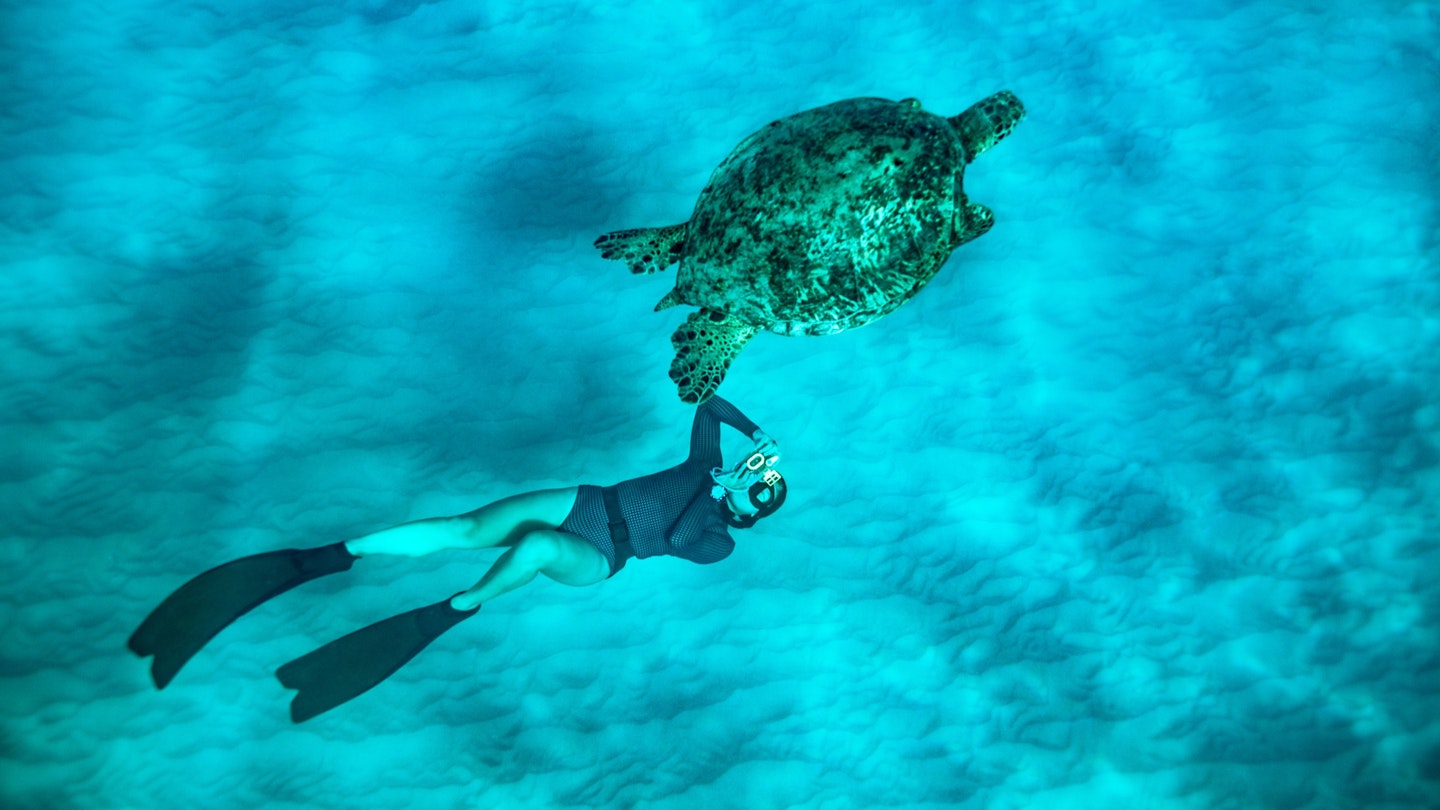Mastering Underwater Photography: Tips from a Pro
Snapping remarkable underwater photos while bobbing around in the open ocean can be quite challenging. You must balance holding your breath while keeping an eye out for surrounding marine life, all while waves are constantly crashing around you.
Just ask Jenny Sathngam, a professional underwater photographer based in Honolulu. She is out on the water three to four times a week, gathering numerous sub-aquatic stories to share. For instance, she recalls the time a young monk seal approached her while accompanied by a giant, protective mama monk. Or the day she found herself trapped between a heavy wave and a reef in just two feet of water, twisting her ankle. Nevertheless, it’s a dream job, and she’s graciously sharing some of her expert tips.
Select the Optimal Time
The first step in capturing stunning underwater photography is choosing the right time of day to shoot. On land, avoid harsh direct sunlight during midday hours and opt for golden-hour lighting during early morning and late afternoon. However, for underwater photography, you need as much sunlight as possible. Therefore, shooting in the middle of the day is ideal to capture the light rays piercing through the water.
If you are new to underwater photography, start in shallow waters. Since less light is absorbed at these depths, you’ll capture truer colors without needing a strobe light. A pro tip: Practice in a swimming pool first to familiarize yourself with your gear and settings.

Understand Your Equipment
Starting with a point-and-shoot waterproof camera at shallow depths can yield excellent results. Alternatively, a GoPro is a great option, thanks to its wide-angle lens, compact size, and user-friendly interface. “I don’t think you can beat the functionality and price point of a GoPro HERO8 Black,” says Sathngam. “They have a built-in wide-angle lens, which is essential for underwater photography, since water magnifies. They can also go much deeper than most entry-level DSLR housings. Plus, you can send the photos straight to your phone and edit them on the spot.”
If your budget allows and you are serious about underwater photography, you may invest in a DSLR, water housing, and a strobe. Alternatively, consider renting the equipment before making a purchase.
When Sathngam is off work and prefers less bulky gear, she uses the Nikon Nikonos V, a fully waterproof 35mm film camera that makes her feel like an old-school underwater explorer, reminiscent of Jacques Cousteau’s underwater camera.

Prioritize Safety
It’s critical to be extremely comfortable in the ocean before attempting underwater photography. Whether you are snorkeling, free diving, or scuba diving, ensure that your swimming and diving skills are second nature so that your primary focus can be on capturing outstanding images. Consequently, taking a course on free diving can be beneficial. PADI (Professional Association of Diving Instructors) offers courses for all skill levels.
Moreover, using the buddy system is highly recommended, as many variables can go wrong underwater. “Not only is it safer, but you can also photograph your friends between looking for fish,” says Sathngam. “I usually prefer to photograph people underwater because I believe it’s the closest we can get to flying.”

Explore Your Camera Settings
If you are using a DSLR and are comfortable with manual settings, feel free to experiment. However, if you do not possess this skill set yet, there’s no need to worry; you can still achieve professional-looking photos.
On calm days where manual settings are feasible, Sathngam suggests using a small to medium aperture to keep everything in focus and a higher ISO as needed, providing you more creative control.

Embrace Fluidity
Ultimately, Sathngam emphasizes the importance of flexibility in underwater photography. “Embrace the unexpected and learn to be adaptable,” she advises. “Few things are under your control once you’re in the water, so maintain realistic expectations and don’t hesitate to take numerous shots while learning.”
Once you resurface, it’s time for post-production. Photo-editing software, whether on your computer or an app, can significantly enhance your images. Two recommended apps by Sathngam are Adobe Photoshop Express Photo Editor and Adobe Lightroom Photo Editor.
“Even in the clearest water, underwater images typically require editing to help them stand out,” she notes. “However, be cautious not to overdo it to maintain a natural look.”





